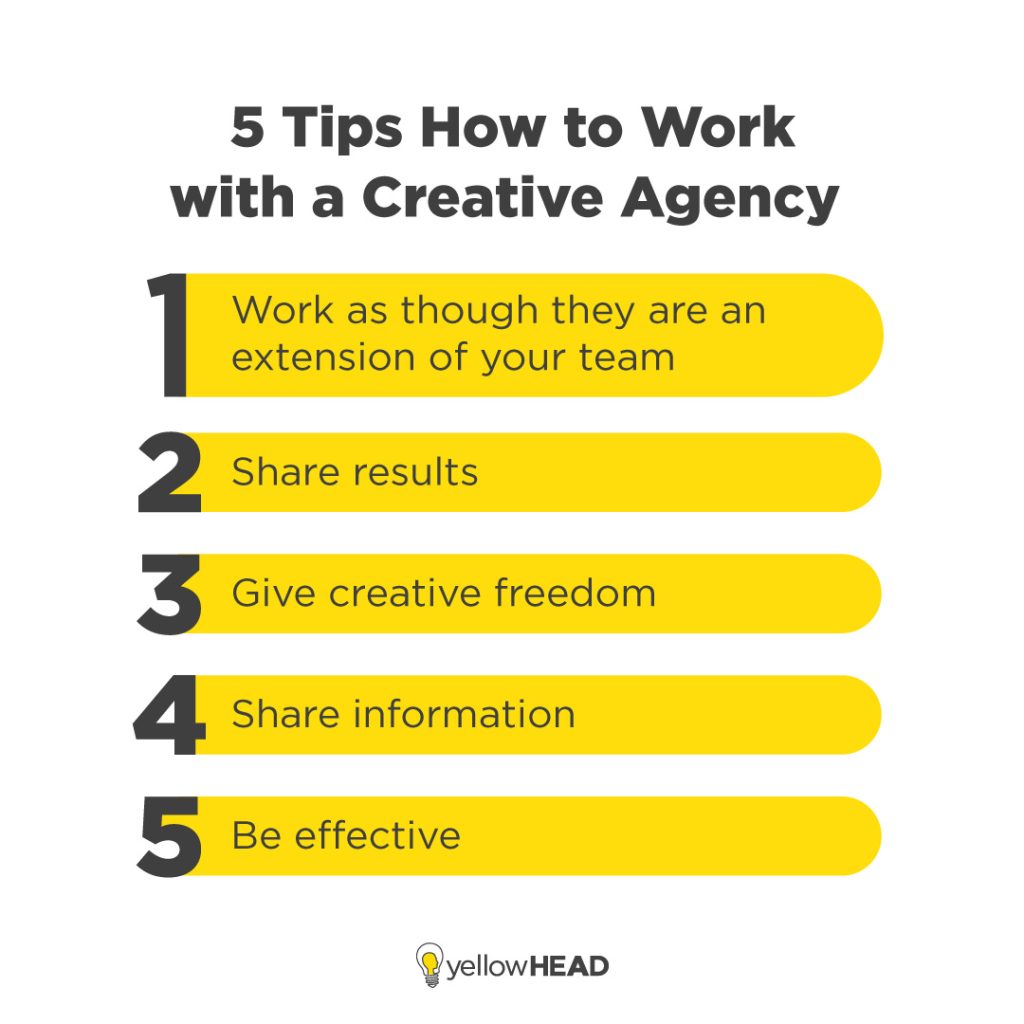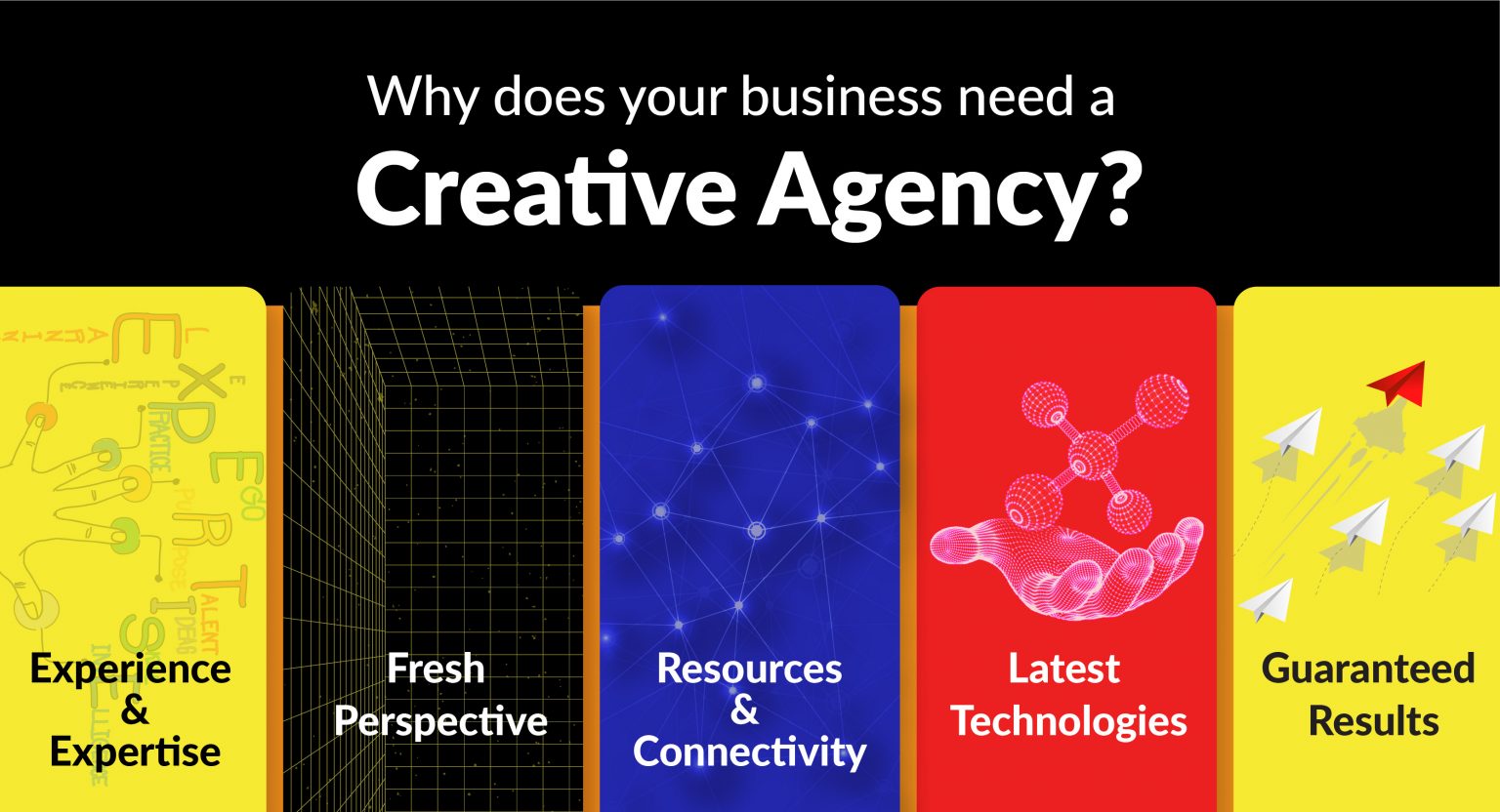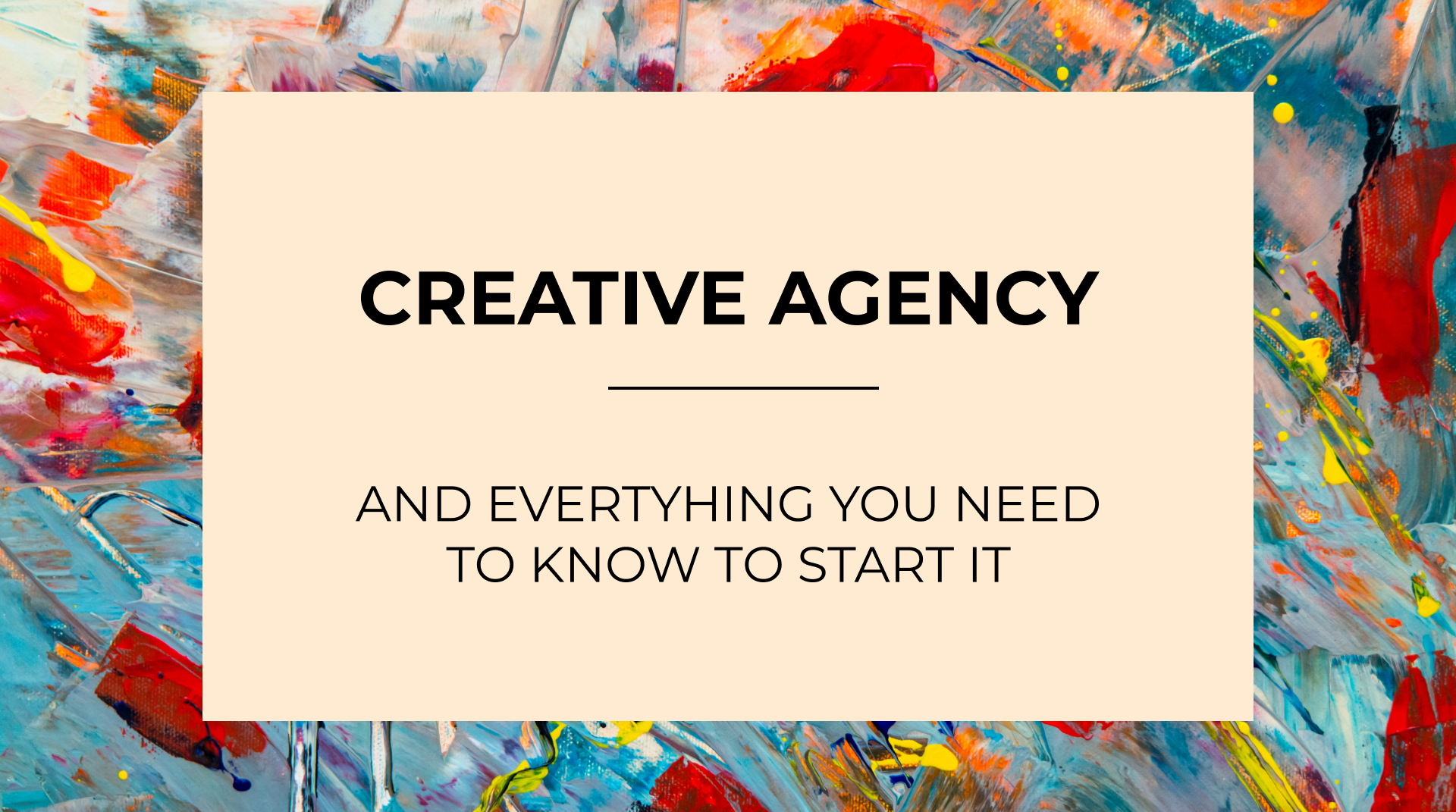How to start a creative agency – In the dynamic realm of creativity, where imagination takes flight and ideas transform into tangible realities, the art of establishing a successful creative agency demands a strategic approach and unwavering dedication. This comprehensive guide will navigate you through the intricate steps involved in launching and thriving in this competitive industry, empowering you to unleash your agency’s full potential.
As you embark on this entrepreneurial journey, you will discover invaluable insights into defining your niche, assembling a talented team, crafting compelling creative campaigns, and building enduring client relationships. With each chapter, you will gain a deeper understanding of the essential elements that drive creative agencies to the forefront of innovation and excellence.
Identifying Your Niche and Target Audience

Establishing a distinct niche and identifying your ideal clientele are essential for the success of your creative agency. Your niche defines the specific services you offer and the industries or markets you specialize in. Understanding your target audience involves comprehending their needs, preferences, and challenges.
Conduct thorough market research to grasp industry trends, customer demographics, and competitive landscapes. This research will provide valuable insights into the unmet needs and pain points of your potential clients, enabling you to tailor your services accordingly.
Market Research Methods
- Surveys and questionnaires: Gather data directly from your target audience.
- Focus groups: Engage in moderated discussions to explore customer perceptions and motivations.
- Competitor analysis: Study your competitors’ offerings, strategies, and target markets.
- Industry reports and data: Utilize research conducted by industry experts and analysts.
Building a Strong Brand Identity

Establishing a memorable and recognizable brand identity is crucial for your creative agency. It’s the foundation upon which your clients will perceive and engage with your services.
Unique Brand Name and Logo
Choose a brand name that resonates with your agency’s values and mission. It should be distinct, easy to pronounce, and relevant to your target audience. Similarly, your logo should be visually appealing, reflect your brand’s personality, and be adaptable across various platforms.
Visual Identity and Consistency
Develop a cohesive visual identity that includes a consistent color palette, typography, and imagery. This visual language should be reflected in all your marketing materials, from your website to social media profiles. Consistency builds recognition and trust among your audience.
Examples of Successful Agency Brand Identities
Consider agencies like Droga5, AKQA, and Wieden+Kennedy. Their strong brand identities have played a significant role in their success. Droga5’s bold and unconventional approach is reflected in its edgy logo and vibrant color scheme, while AKQA’s minimalist and sophisticated aesthetic aligns with its focus on technology and innovation.
Assembling a Talented Team: How To Start A Creative Agency

Building a successful creative agency team requires assembling individuals with the right skills and experience. A diverse workforce fosters innovation and inclusivity. Effective hiring, onboarding, and management strategies are crucial for team success.
To achieve a well-rounded team, consider the following key skills and experience:
| Role | Key Skills and Experience |
|---|---|
| Creative Director | Leadership, vision, strategic thinking, client management, design expertise |
| Copywriter | Writing proficiency, storytelling ability, marketing knowledge |
| Designer | Graphic design skills, visual storytelling, user experience understanding |
| Account Manager | Client relationship management, project coordination, communication skills |
| Social Media Manager | Social media marketing expertise, content creation, community engagement |
The hiring process should be structured and efficient. Follow these steps:
- Define job requirements and qualifications.
- Source candidates through various channels.
- Conduct thorough interviews to assess skills and cultural fit.
- Provide clear job offers and onboarding plans.
Effective onboarding helps new hires integrate into the team quickly. Provide comprehensive training, mentorship, and support.
Fostering creativity and innovation requires a supportive work environment. Encourage idea sharing, experimentation, and feedback. Celebrate successes and learn from failures.
Team collaboration and communication are essential. Establish clear communication channels, hold regular team meetings, and promote open and honest discussions.
Managing a diverse workforce effectively requires promoting inclusivity and equity. Encourage diverse perspectives, provide equal opportunities, and create a welcoming and respectful work environment.
Developing Creative Campaigns for Clients

Creating successful creative campaigns for clients requires a strategic and iterative process. The following steps Artikel the key phases involved:
Brainstorming
Brainstorming sessions foster idea generation and collaboration. Engage a diverse team to explore multiple perspectives, challenge assumptions, and generate a wide range of creative solutions.
Research
Conduct thorough research to understand the client’s brand, target audience, and competitive landscape. This information informs the development of relevant and effective campaign concepts.
Ideation
Based on research, develop creative concepts that align with the campaign objectives and target audience. Encourage out-of-the-box thinking and experiment with different approaches.
Execution
Once the concept is finalized, execute the campaign across the chosen channels. This involves creating visuals, writing copy, and implementing the campaign strategy.
Marketing and Business Development

Marketing and business development are essential for the success of any creative agency. By effectively promoting your services and attracting clients, you can build a strong foundation for your business. This involves developing a comprehensive marketing plan, generating leads, and building relationships with potential clients.
Marketing Plan
A well-defined marketing plan is crucial for guiding your marketing efforts. It should include the following elements:
- Target Audience:Define the specific group of businesses or individuals you want to reach.
- Marketing Objectives:Set clear goals for your marketing efforts, such as increasing brand awareness or generating leads.
- Marketing Strategies:Artikel the specific tactics you will use to achieve your objectives, such as content marketing or social media advertising.
- Marketing Budget:Determine the amount of money you are willing to invest in marketing.
- Marketing Timeline:Establish a timeline for implementing your marketing plan and tracking its progress.
- Marketing Measurement:Define the metrics you will use to measure the effectiveness of your marketing campaigns, such as website traffic or lead generation.
Lead Generation Strategies
Lead generation is the process of attracting potential clients to your agency. Here are some effective lead generation strategies:
- Content Marketing:Create valuable content that educates and informs your target audience.
- Social Media Marketing:Engage with potential clients on social media platforms.
- Email Marketing:Build an email list and send targeted email campaigns.
- Search Engine Optimization ():Optimize your website and content to improve your visibility in search engine results.
- Paid Advertising:Run targeted advertising campaigns on platforms like Google AdWords or Facebook Ads.
- Referral Programs:Encourage existing clients to refer new business to your agency.
Networking and Relationship Building
Networking and relationship building are essential for growing your agency’s client base. Here are some tips:
- Attend Industry Events:Attend conferences, workshops, and other industry events to connect with potential clients.
- Join Professional Organizations:Become a member of professional organizations related to your industry.
- Engage on Social Media:Join relevant LinkedIn groups and engage in discussions.
- Build Personal Connections:Reach out to potential clients on a personal level.
- Provide Value to Potential Clients:Offer free consultations or resources that can help potential clients.
Factors to Consider When Pricing Services
Determining the cost of your agency’s services involves careful consideration of various factors to ensure profitability and client satisfaction. These factors include direct costs, indirect costs, and profit margin.
To get started, you need to understand your target audience and develop a strong brand identity. Then, you can explore different marketing channels such as social media, email marketing, and creative call ins to reach your audience. These channels can help you generate leads and build relationships with potential clients, which is crucial for the success of your creative agency.
Direct Costs
Direct costs are expenses directly related to providing services to clients. They include:
- Salaries and benefits of staff involved in the project
- Equipment and software used for the project
- Materials and supplies consumed during the project
Indirect Costs, How to start a creative agency
Indirect costs are expenses not directly tied to a specific project but necessary for the overall operation of the agency. They include:
- Rent and utilities
- Marketing and business development
- Administrative and overhead expenses
Profit Margin
Profit margin is the percentage of revenue that the agency keeps after covering all costs. It is essential for the agency’s financial stability and growth.
Pricing Models
Once you have determined the costs associated with your services, you can develop pricing models that meet your business objectives. Common pricing models include:
- Value-based pricing:Charges based on the perceived value of your services to the client.
- Cost-plus pricing:Charges based on the cost of providing the service plus a profit margin.
- Competitive pricing:Charges based on the prices of similar services offered by competitors.
Managing Client Relationships

Building and maintaining strong client relationships is paramount for any creative agency’s success. Fostering positive interactions leads to repeat business, referrals, and enhanced brand reputation.To cultivate lasting client relationships, prioritize effective communication, transparency, and exceptional results. Open and frequent communication ensures alignment on project goals and expectations.
Be transparent about progress, challenges, and timelines, building trust and confidence. Consistently deliver exceptional results that meet or exceed client expectations, solidifying your agency’s value and fostering long-term partnerships.
Communicating Effectively
- Establish clear communication channels (e.g., email, instant messaging, phone) and set expectations for response times.
- Use active listening to understand client needs and perspectives.
- Summarize key points and decisions in writing to ensure clarity and alignment.
Maintaining Transparency
- Provide regular updates on project progress, timelines, and potential roadblocks.
- Share relevant insights and industry trends to demonstrate your agency’s expertise.
- Be open to feedback and suggestions, fostering a collaborative and responsive relationship.
Delivering Exceptional Results
- Set clear project goals and milestones to ensure alignment on deliverables.
- Conduct thorough research and analysis to develop tailored creative solutions.
- Utilize industry best practices and innovative techniques to achieve impactful results.
Financial Management

Financial management is crucial for creative agencies to ensure financial stability and profitability. It involves budgeting, tracking expenses, managing cash flow, and making sound financial decisions.
Budgeting
Create a comprehensive budget that Artikels expected income and expenses. Include expenses such as salaries, rent, equipment, marketing, and project-related costs. Regularly monitor actual expenses against the budget and make adjustments as needed.
Legal Considerations

As a creative agency, navigating the legal landscape is essential for protecting your business and ensuring compliance. Understanding the legal requirements and implications of contracts, intellectual property, and insurance is paramount.
Contracts form the foundation of client relationships. Clearly define the scope of work, payment terms, and intellectual property ownership to avoid misunderstandings and disputes. Consult an attorney to ensure your contracts are legally sound.
Intellectual Property
Protect your creative work by securing copyrights, trademarks, and patents. Registering your intellectual property prevents others from using your ideas without authorization, safeguarding your brand and revenue streams.
Insurance
Obtain appropriate insurance policies to mitigate risks associated with your operations. General liability insurance protects against claims of negligence, while errors and omissions insurance covers mistakes or oversights in your creative work.
Staying Ahead of Industry Trends
Staying abreast of the latest creative and technological advancements is crucial for any creative agency. By doing so, you can stay competitive, offer innovative solutions to clients, and attract top talent.To stay ahead, make it a habit to attend industry events, read publications, and experiment with new techniques.
Industry events provide an excellent opportunity to network with peers, learn about new trends, and get inspired by thought leaders. Publications, such as trade magazines and online blogs, offer valuable insights into the latest creative and technological advancements. Experimenting with new techniques helps you stay at the forefront of innovation and develop unique solutions for your clients.
Attend Industry Events
Attend industry conferences, workshops, and exhibitions to stay updated on the latest trends and network with peers. These events offer opportunities to learn from experts, discover new technologies, and get inspired by innovative ideas.
Read Publications
Subscribe to industry magazines, blogs, and online publications to stay informed about the latest creative and technological advancements. These publications provide valuable insights, case studies, and expert opinions that can help you stay ahead of the curve.
Experiment with New Techniques
Don’t be afraid to experiment with new creative and technological techniques. By pushing the boundaries, you can develop unique solutions for your clients and stay at the forefront of innovation.
Case Studies and Testimonials
Demonstrating the effectiveness of your creative agency is crucial for attracting and retaining clients. Case studies and testimonials serve as powerful tools to showcase your capabilities and build credibility.
Highlight successful campaigns executed by your agency, providing specific details about the objectives, strategies, and results achieved. Use a combination of text, images, and videos to illustrate the impact of your work.
Sharing Case Studies
- Choose campaigns that showcase your agency’s strengths and versatility.
- Describe the challenges faced and how your agency’s solutions met the client’s needs.
- Include quantitative data to support the effectiveness of your campaigns, such as increased sales, website traffic, or social media engagement.
- Obtain written consent from clients before using their testimonials.
Incorporating Testimonials
- Testimonials provide social proof of your agency’s value.
- Use blockquotes to highlight compelling statements from satisfied clients.
- Showcase testimonials from a diverse range of clients to demonstrate your agency’s capabilities across different industries and project types.
- Consider using a table to present key metrics and outcomes from different case studies for easy comparison.
Frequently Asked Questions

Starting a creative agency can raise various questions. Here’s a comprehensive list of frequently asked questions to help address your concerns:
We’ve compiled a list of frequently asked questions and provided detailed answers to help you navigate the process of starting a creative agency:
What are the key steps to starting a creative agency?
The key steps to starting a creative agency include identifying your niche and target audience, building a strong brand identity, assembling a talented team, developing creative campaigns for clients, marketing and business development, pricing your services, managing client relationships, financial management, legal considerations, and staying ahead of industry trends.
What are the common challenges faced by creative agencies?
Common challenges faced by creative agencies include competition, attracting and retaining top talent, managing client expectations, staying up-to-date with industry trends, and financial management.
How can I differentiate my creative agency from competitors?
To differentiate your creative agency from competitors, focus on developing a unique value proposition, specializing in a particular niche, providing exceptional customer service, and leveraging your agency’s strengths.
What are the essential qualities of a successful creative agency owner?
Essential qualities of a successful creative agency owner include creativity, leadership, business acumen, communication skills, and the ability to manage a team.
How can I attract and retain top talent for my creative agency?
To attract and retain top talent for your creative agency, offer competitive compensation and benefits, provide opportunities for professional development, create a positive and supportive work environment, and recognize and reward employee achievements.
What are the key financial metrics that I should track for my creative agency?
Key financial metrics to track for your creative agency include revenue, profit, expenses, cash flow, and return on investment (ROI).
How can I ensure that my creative agency remains profitable?
To ensure that your creative agency remains profitable, focus on providing high-quality services, managing expenses effectively, pricing your services appropriately, and diversifying your revenue streams.
What are the legal considerations that I need to be aware of when starting a creative agency?
Legal considerations when starting a creative agency include choosing the right business structure, obtaining necessary licenses and permits, protecting your intellectual property, and complying with employment laws.
How can I stay ahead of industry trends as a creative agency?
To stay ahead of industry trends as a creative agency, attend industry events, read trade publications, experiment with new technologies, and seek feedback from clients and partners.
What are the benefits of working with a creative agency?
Benefits of working with a creative agency include access to expertise and experience, fresh perspectives and ideas, improved marketing and communication efforts, and increased brand awareness and visibility.
How can I measure the success of my creative agency?
To measure the success of your creative agency, track key performance indicators (KPIs) such as client satisfaction, revenue growth, industry recognition, and employee retention.
If you have any further questions, please do not hesitate to contact us. We’re here to support you on your journey to starting a successful creative agency.
Resources and Tools

As a creative agency, having the right resources and tools is crucial for success. These resources can streamline your workflow, enhance your creativity, and provide you with the support you need to deliver exceptional results for your clients.
Software
Investing in the right software can significantly improve your agency’s efficiency and productivity. Consider tools for project management, design, collaboration, and marketing automation.
- Project Management: Asana, Trello, Basecamp
- Design: Adobe Creative Suite, Figma, Sketch
- Collaboration: Slack, Microsoft Teams, Zoom
- Marketing Automation: HubSpot, Mailchimp, Salesforce
Templates
Using templates can save you time and ensure consistency in your work. Create templates for proposals, contracts, invoices, and other essential documents.
Industry Organizations
Joining industry organizations can provide you with valuable resources, networking opportunities, and professional development. Consider organizations such as the American Association of Advertising Agencies (4A’s) and the Creative Marketing Association (CMA).
Educational Materials
Continuously learning and staying up-to-date with industry trends is essential. Take advantage of online courses, webinars, and workshops to enhance your knowledge and skills.
FAQ Compilation
What are the key factors to consider when starting a creative agency?
Identifying your niche, building a strong brand identity, assembling a talented team, developing a robust marketing strategy, and ensuring financial stability are crucial factors to consider when starting a creative agency.
How do I define my agency’s niche and target audience?
Conduct thorough market research to understand industry trends and customer needs. Analyze your strengths and unique offerings to identify the specific area where your agency can excel and resonate with a well-defined target audience.
What are the essential elements of a successful creative campaign?
Brainstorming, research, ideation, and execution are the key steps in developing impactful creative campaigns. Each step requires careful planning, collaboration, and a deep understanding of the target audience.
How do I price my agency’s services effectively?
Consider direct and indirect costs, market research, competitive analysis, and your agency’s value proposition when determining your pricing. Develop pricing models that are transparent, competitive, and aligned with your agency’s goals.
What are the legal considerations for starting a creative agency?
Understanding contracts, intellectual property rights, and insurance requirements is essential to protect your agency and ensure compliance with industry regulations.